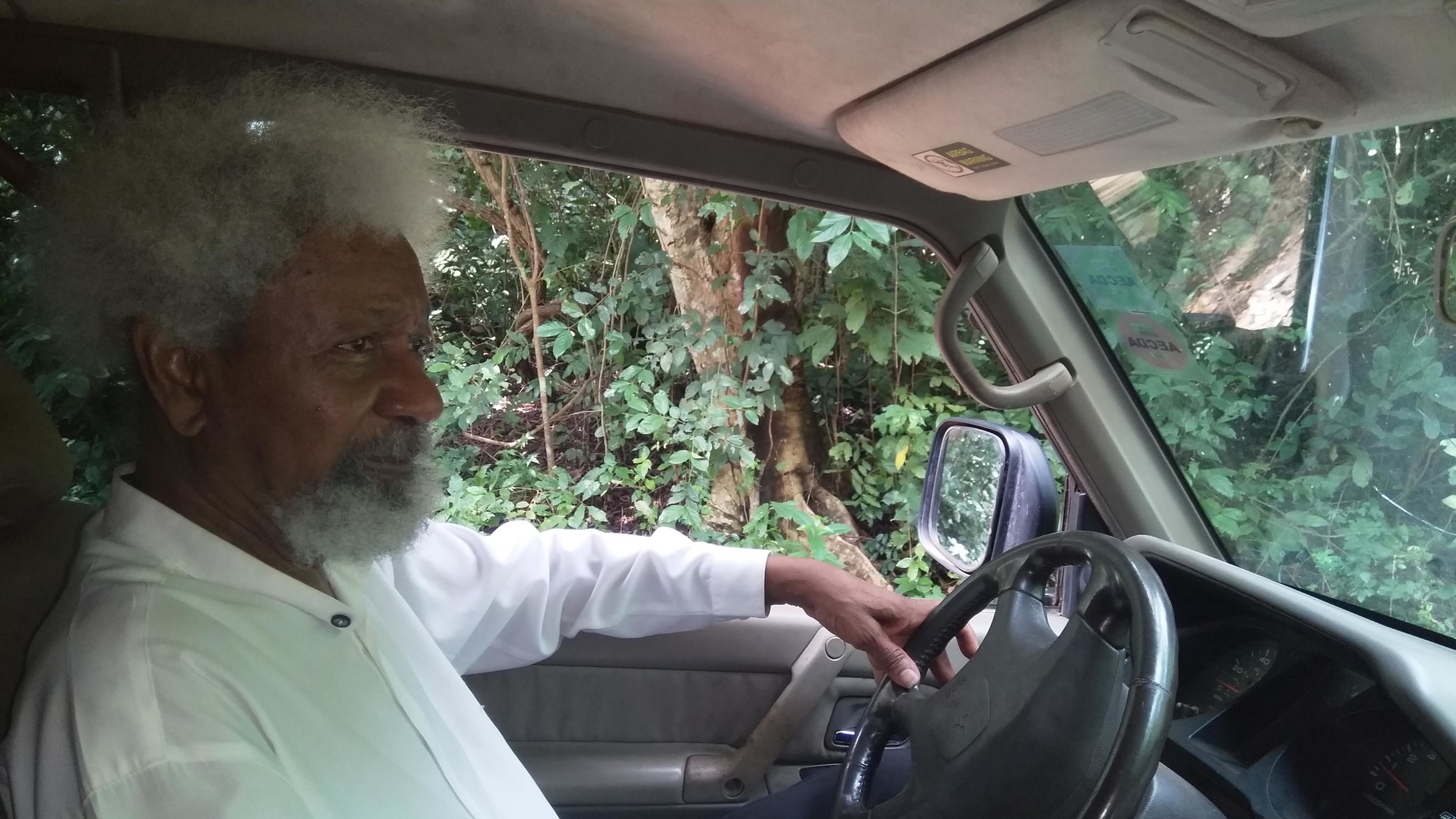When an old woman recognized him behind the wheel and flagged us down, Wọlé Ṣóyínká interrupted our conversation. He knew her too, it seemed, having seen her in the area before. “I’m hungry,” the woman said, in Yorùbá. “I’m a relative of…” a name I no longer remember. “Please help me.”
“Come and see me at home,” the professor said, in Yorùbá. “I don’t have anything with me here.”
His Yorùbá was mellifluous, buttered with an Ẹ̀gbá and English prosodic tinge, and an occasionally archaic syntax. Many minutes later, for instance, while he was speaking on the phone to someone who had called, he’d asked “Ibo lo gbé wà?” rather than the “Ibo lo wà?” one normally hears, a bit like saying “Where are you at?” rather than “Where are you?” The superflous gbé made his Yorùbá sound like a poetic, discarded form.
As he eased his dark green Mitsubishi Shogun Sport forward—“My old hunting vehicle,” he had called it when we set out from his house for a drive around the area—he returned to a story he was telling, about a hunting trip in a forest in Ìbàdàn, when the company had encountered a herd of ẹ̀fọ̀n, buffalo, in a bad mood. “Normally, they won’t attack unless they have calves,” he recalled. “But because one of them was wounded, it attacked.” In his voice was a kind of protest that the animal had not come to where he had been waiting with a rifle. “I was so upset. It went and picked on the poor beaters. It picked him up, poor Felician”—a Togolese friend of his who had come on the hunt—“and tossed him. He was very fortunate, the horn passed through something, but it didn’t touch any vital organs, it just missed the liver. We carried him in turns from the bush, and immediately, the hunters picked up some herbs and squeezed onto the wound, so he was fine eventually. But he was in shock. He lost a lot of blood. That’s how dangerous they are.”
I had asked him about the most dangerous animal he had encountered in the bush. “That is the túùkú, the warthog. The tuskers, by far,” he responded. “Those things are vicious. The buffalo comes second.” That event with the buffalo, he said, had convinced him that it was a myth that bulls were triggered by the color red, since they had not attacked the hunters who had been wearing red.
As he spoke, we had left the vicinity of his house, and were driving through adjoining areas which he said had used to be bush, but were turning into an urban sprawl. It hadn’t even occurred to me that we still had buffalos. I live in Lagos near a place called Igbó Ẹfọ̀n, the forest of buffaloes, but all you can see in every direction are rows of residential buildings. No forest, much less buffalo.
“Most of these places,” he continued pointing, “used to be places where we came to hunt for small game and so on. One or two houses. Nothing else.”
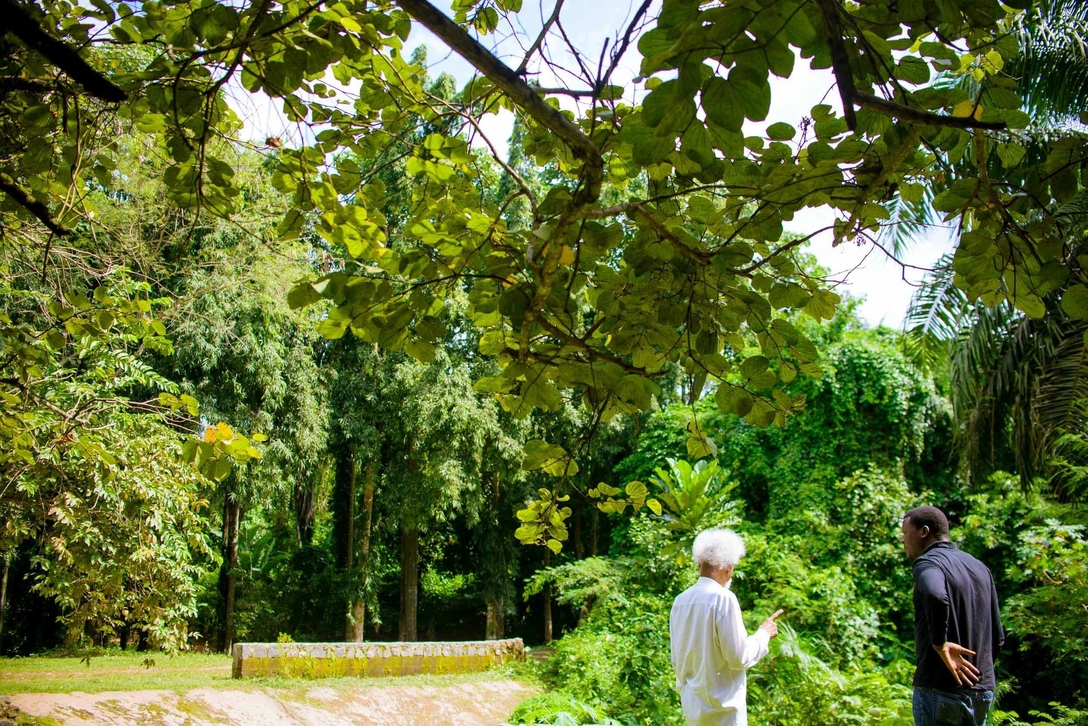
We had planned to meet at his office in Lagos a day earlier, but when torrential rain had prevented him from making it, he invited me to his home, a hundred kilometers to the north. “Would you like us to meet in Abẹ́òkuta? I can arrange that for this week. I’m thinking that this might even be more useful for you…”
(It was.)
The great writer was much warmer and more accessible than his reputation would have suggested. At eighty-four, Africa’s first Nobel Laureate in Literature has deserved secluded retirement, away from the worries of the world, but—out of obligation, one assumes—he ventures out regularly. In July, for instance, he had attended a series of events created to honour him: In Ifẹ̀, where his old campus housing has been turned into a museum in his name; in Ìbàdàn, where the Arts Theatre has been renamed after him; and in Lagos, where he launched the latest book in his Interventions series, collections of essays on the Nigerian political space that he has published every year since 2010. This eighth volume is titled QUIS CUSTODIET IPSOS CUSTODES?: GANI’S UNFINISHED BUSINESS, which he described as “one of the nastiest books” he has ever written.
As we approached more built-up areas, people began to recognize him behind the wheel. I wondered if they were more amazed to witness a rare sight of their famous neighbour or worried to see an eighty-four year-old drive. The stares, waves, and greetings reminded me of a scene from Ayé Ògúndé, a documentary about the pioneer theatre and movie legend Hubert Ògúndé, in which the dramatist spent as much time acknowledging each passerby, while driving through his home town of Ọ̀sọ̀sà, as he did answering the interviewer’s questions. But if Ṣóyínká noticed the attention, he successfully ignored it.
Wọlé Ṣóyínká is our most prominent travel writer, and his memoirs have always been in motion; his 1965 play cited by the Nobel Committee is titled The Road. His 2006 autobiography You Must Set Forth at Dawn began and ended as a road trip back into the country after years of exile; even his 1989 memoir about his father, Ìṣarà, was subtitled “a voyage…”
I became curious about his famous residential estate, however, after watching a documentary, Poète Citoyen (1990), a substantial part of which focused on the new building construction that he had set up in the forest at the back of a housing estate at the outskirts of Abẹ́òkuta. “I got the land around 1984, just after I retired from Ifẹ̀,” he explained; “It was supposed to be a little cottage away from the noise. But with the Nobel, I came into a bit of money and decided to expand it.” I was curious about what it meant for him to be “away from the noise”; I was curious about his experience with animals, and his thoughts about their gradual disappearance. In the documentary, he has been filmed with some other hunters roasting a big buck they had killed. I wanted to know if he still found animals that big in the forest or if urban encroachment had made that difficult. I also wanted to see the house myself.
The house sits tucked away behind a thick forest; from the road you would never know a house lay behind it. There is no visible fence, just a thicket disguising the entrance. If you wandered in by mistake, a boldly-lettered sign at the entrance reads: “TRESPASSING VEHICLES WILL BE SHOT AND EATEN.”
Made of red brick, the house is fitted, on one side, with big slanted glass windows that let in sunlight and breeze while giving the resident a good view of the grounds. A small stream runs across the grounds, through a small bush that hides a deceptive marshland, under a culvert, and into the bush on the other side of the property towards a new public amphitheatre. “One of these VC caterpillars came to try and widen the stream one time,” Ṣóyínká recalls as we walk around, “and it sank.”
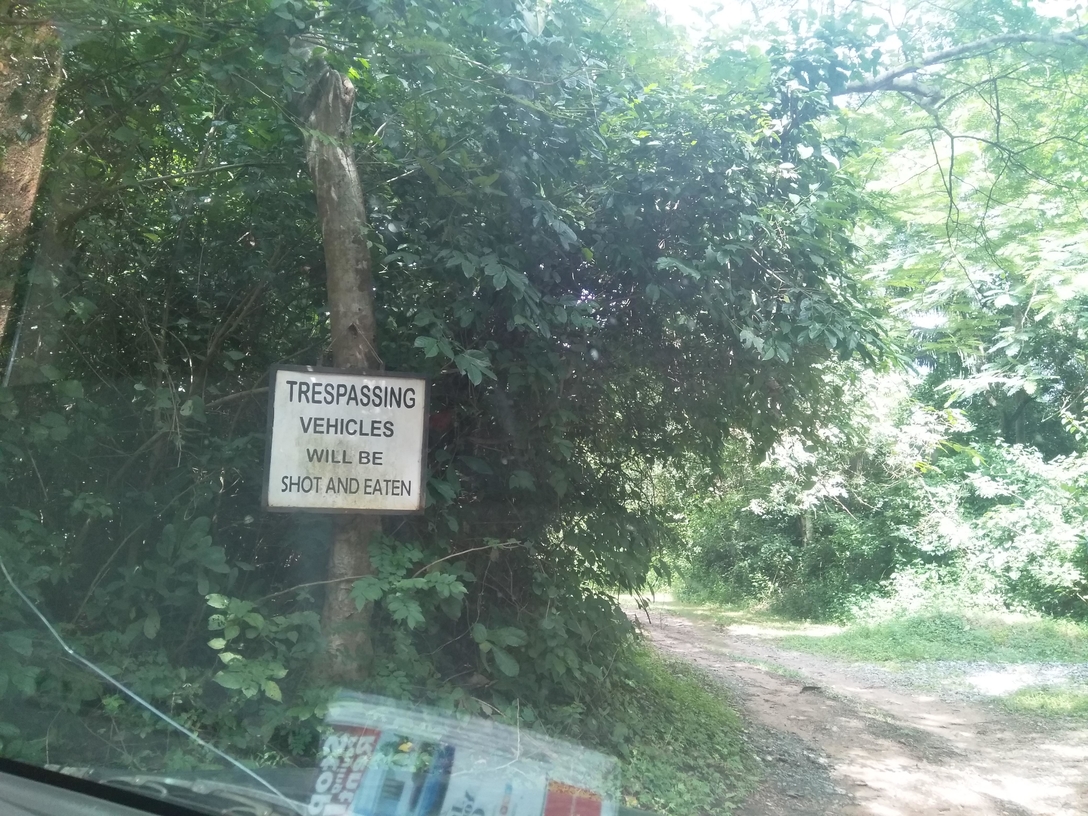
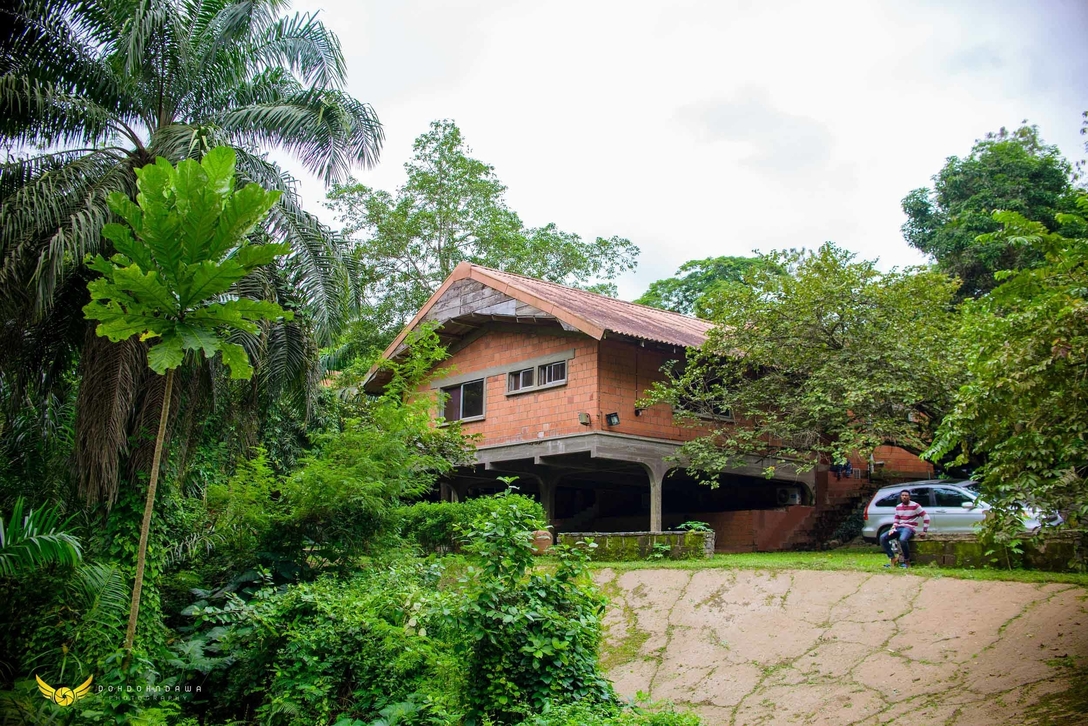
“All these you see,” Ṣóyínká points, “the forest, the moment you enter, from the place where you’re taking the picture, is completely reforested. It was the first task I set myself to: reforesting. That place was completely bare. It was most depressing just to see that place completely denuded and [the house] exposed.”
There are a few palm trees around the properties and, knowing him to be a palm wine connoisseur, I asked how much they have produced. “I used to have palm wine from over there,” he pointed at one. “In fact, I had a personal tapper, [but] they all gave up one after the other. I said, ‘Look, this what we will do. As long as you deliver a gourd, the rest is all yours.’ [But] he wanted an astronomical pay.” He sounded resigned. “The thing is they usually want to cut the tree and then tap it from the base.” He was describing inexperienced, modern tappers, who end up leaving fewer viable palm trees in the forest. “You have to go deep to find those who actually go up. I gave up on that.”
The distance of the house from the populated part of town was the property’s most distinctive feature. “I had asked for the map of the area,” he said, from the town planning authorities. “I went to them and said, “let’s move some things around. This is where I want.” And if its location deep in the bush inconvenienced his visitors, he clearly delighted in their discomfort.
As we drove, a spot on the road reminded him of a time when group of labourers had been commissioned to come to the property in those early days, but had developed cold feet halfway into the bush. The location must have seemed so ridiculously far from civilization that the workers had begun making up stories in their heads about what was about to happen to them; when one of the workers cajoled the driver to stop, to allow him relieve his bladder by the roadside, the men seized the golden opportunity and fled in all directions, as soon as the truck stopped. He told the story with relish, with mischief in his eyes.
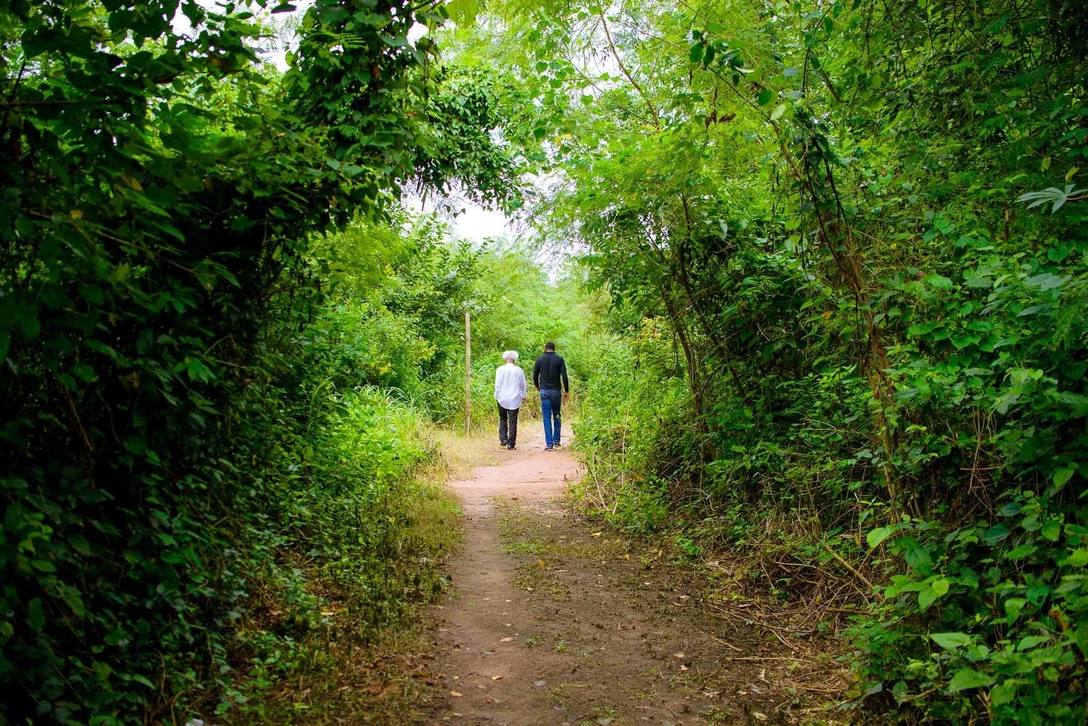
Ṣóyínká has lived in many houses. His tenure as Head of Drama in Ìbàdàn was cut short when he was detained by the government for twenty-two months from 1967 to ‘69 (his prison memoir, The Man Died, concerns this period). Ṣóyínká would eventually settle on the staff roll of the Ọbáfẹ́mi Awólọ́wọ̀ University (formerly University of Ifẹ̀) for about 24 years, on and off. His last place of residence on that campus is now a museum, featuring cultural artefacts from the writer’s collection.
Not all of his houses have been kept up. Somewhere on Military Street in Oníkan at Lagos Island there was once been a bungalow belonging to Olúṣẹ́gun Azaria Ransome-Kútì, Wọlé Ṣóyínká’s maternal uncle, where Ṣóyínká lived in the gap year between secondary school and university. “My parents were very scared of me being let loose in Lagos,” he told me. “I insisted I had to be independent at least for a year before going to university.” His uncle had been “one of the very first senior service indigenous products [in the pharmacy profession in Nigeria]” he remembered. “Impeccable with his bowtie, shirt, so on. He was also a quite independent man, very independent man. He defied the family by marrying Bintu who was a Muslim. You can imagine what ripples that sent.”
In 2008, his uncle’s house — after serving as a pediatric clinic for his older cousin Olíkóyè Ransome Kútì, and as a rehearsal space by his cousin Fẹlá, each at different times — was torn down to make way for a high-rise building. Not even a plaque was erected to signify what had once stood there.
I wondered if his childhood home in Aké, Abẹ́òkuta, so fondly described in his 1981 autobiography, still stood; was it there by the church for visitors to see, or convert, sometime in the future, into a museum?
“No,” he said, with regret. “They wiped it out. They just built on it,” while he was out of the country. “The school is still there as it was. They built a new church, and they just erased those little [residential areas]. For some time at least I was able to see the old place. If I had known that was going to happen, I would have filmed it.”
We walked around his estate for about twenty minutes, looking at a newly designed public amphitheatre on the grounds, but I was the one left panting. At eighty-four, Ṣóyínká doesn’t show signs of fatigue.
On the grounds of Ṣóyínká’s residence today, a forest reserve covers every available space except for the living area on one end and the outdoor amphitheatre on the other, about ten minutes away by walking. The property is about four and a half acres wide, with the last acre or so acquired just a few years ago and set apart for cultural activities and tourism. The amphitheater is managed by the International Cultural Exchange Programme run by Mr. Tẹ́jú Kareem of Z-Mirage. (“The ICE is a program of cultural exchange [aimed at] understanding one another’s culture as a means of better understanding the world,” Mr. Kareem said to me on the phone; the organisation has staged Ṣóyínká’s 1960 play A Dance of the Forests in this venue every year since the writer turned eighty in 2014, and plans to keep up the tradition. “It’s going to be a proper complete amphitheater with all theatre requirements to make a good play,” he said. “We also intend to make it a tourist destination. It [will] also serve as [a] literary and academic resource.”) An adjoining house, one of the first new buildings around the property, will serve as a guest house for visiting scholars, writers and artists.
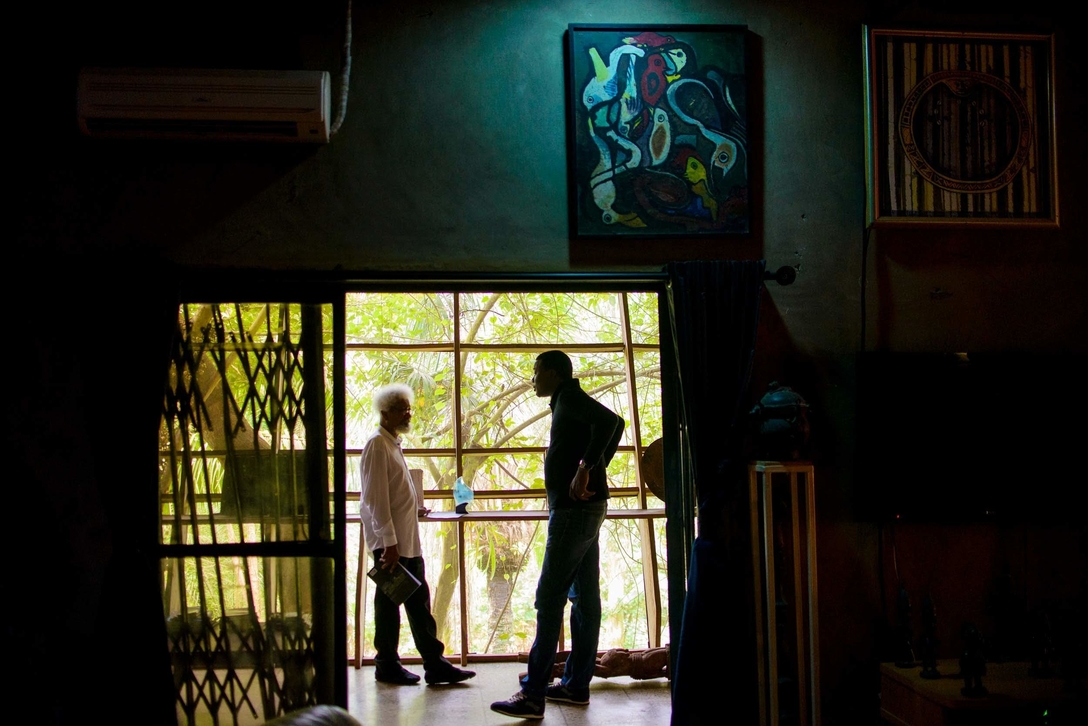
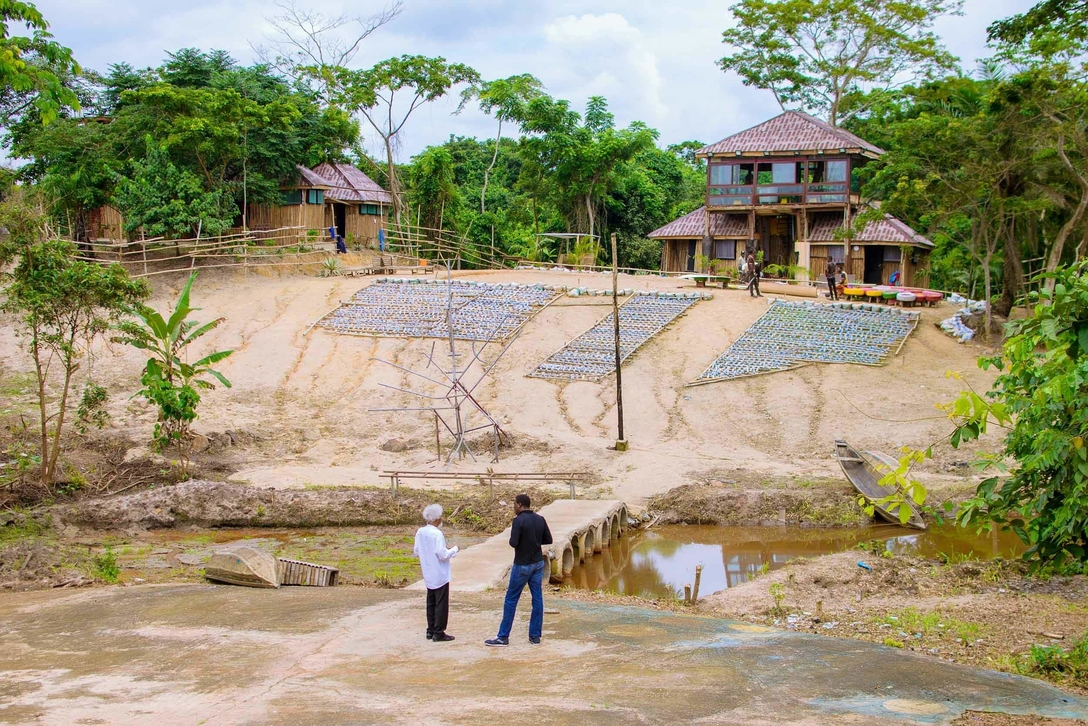
There is no other conservation area in Nigeria quite like this (with the possible exception of the Ọ̀ṣun Grove in Òṣogbo, shepherded and conserved by Susanne Wenger, the Austrian Olórìṣà who lived there and protected it with her life from the 1960s until she died in 2009). “Our major concern, our principal vocabulary, is to conserve the forest,” Mr. Kareem had told me. “[Everything] that we do there is largely conservation oriented.”
Our conversation eventually turned to Ṣóyínká’s obsession with collecting art and antiques from around the world. “I know the government has plans,” Ṣóyínká said, “but given the weight, the task of keeping those antiques, the wooden ones, is a fight.” The Ogun State Government has declared the home and its grounds a heritage site, he added.
On almost every available space around his living room stood a piece of art: ancient bronze heads from Ifẹ̀, life-sized bronze leopards from Benin that I had only seen in art history textbooks, and many more. At the entrance to the building is a carved door from Cameroon. “It belonged to the harem of one of the kings,” Ṣóyínká said. “[It] came back from the United States. I was doing a production at the Goodman Theatre where the set design was going to be something authentic, just a touch, so we went to some galleries of antiquities and there I saw this. And I said let’s borrow this or make a mould of it and use it as the entrance to the bride’s home just to give it that authentic touch, so we did that. It had actually been part paid for by the Japanese… some kind of payment. But we made it possible for the sale to be reversed. Fortunately, the woman in charge was a black woman so I played the race card. I said ‘Let’s negotiate. How can all these Japanese [take them]? Let’s negotiate…’ We negotiated, so I brought it back,” he concluded. “I felt very happy about it, to have been able to bring something back.”
Why had he became such a collector? “It actually came out of the knowledge that a lot of these were being lost. Even some of my expatriate colleagues were taking them out, shipping them out while I was a fellow at University of Ìbàdàn when I just got back [in the early ‘60s]” he said. “In fact some of them, if I remember correctly, were caught… They were continuing the tradition of Frobenius”—Leo Frobenius, the German anthropologist who was once described as “a freebooting Indiana Jones figure, part visionary, part charlatan,” who had discovered the Orí Olókun in 1910 during an excavation. “So this started as a sort of a personal desire for one or two, and then it became a disease.”
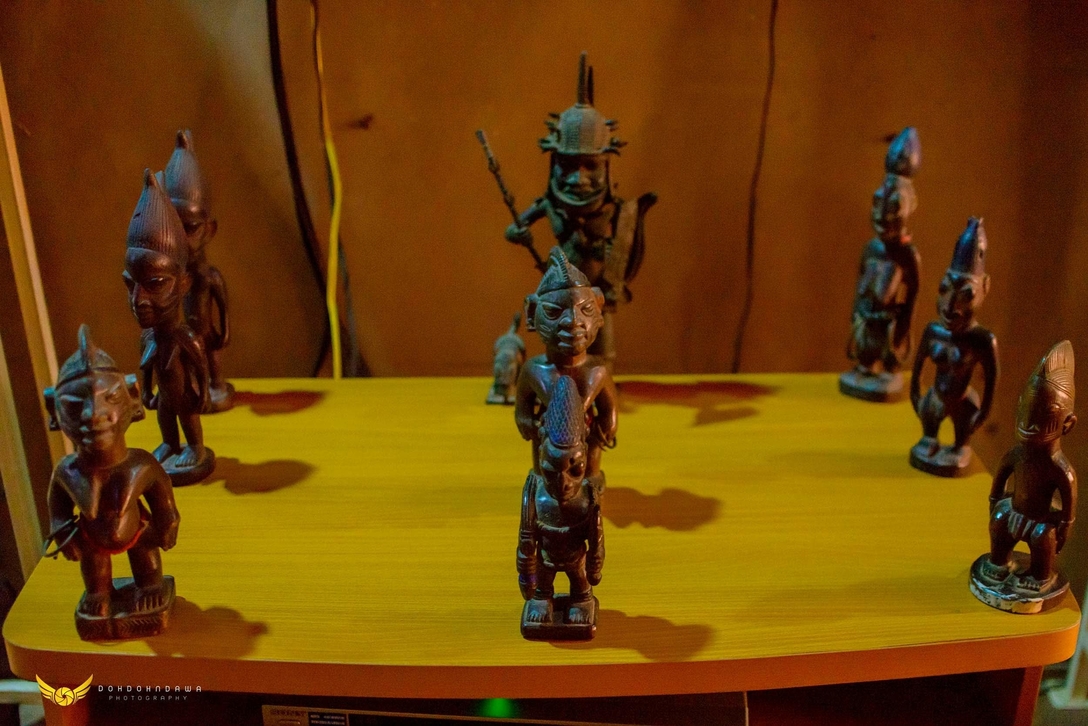
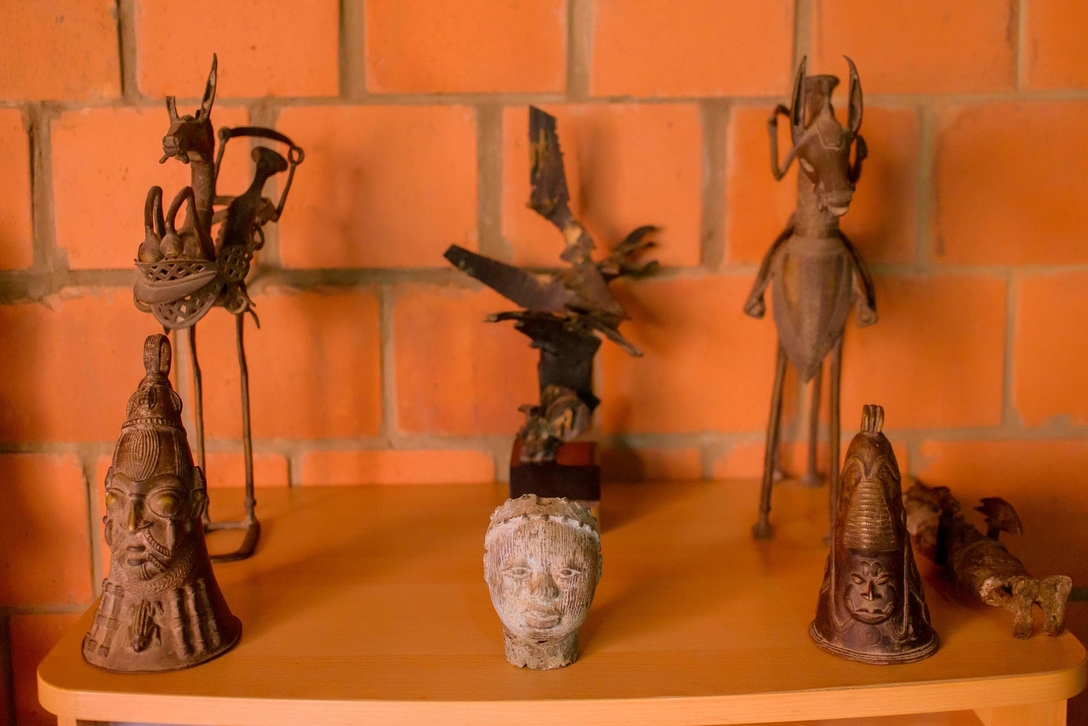
His affliction led to a collection that travels on at least three continents. A rotating exhibition is going around Europe, while a huge part of the writer’s papers and other collections are held at Harvard University. When I asked how his family coped with his art-collecting habit, he admitted that it had always been “a tussle between housekeeping money and buying the latest antique.”
Ṣóyínká’s collecting has been such a pernicious “disease,” in fact, that it almost led to an international incident: in You Must Set Forth At Dawn, he describes going to Brazil in the late ‘70s, on a daredevil mission to retrieve an Orí Olókun bronze cast that he thought he had located at the house of a noted ethnologist and Yorùbá priest of Ifá from Brazil, Pierre Verger. In a drunken moment, Verger had told a Nigerian scholar that he had stolen the original bronze head from Ifẹ̀. And so, with help from Olúṣẹ́gun Ọbásanjọ́, then Military Head-of-State, Ṣóyínká conspired to delay Verger’s return from Lagos long enough so that he could board a plane to Bahia, and finagle his way into Verger’s house. In the end, the “bronze” turned out to be a crude souvenir from the British Museum, with the initials BM printed on the back, and Verger almost managed to catch Ṣóyínká in in the middle of his heist.
When I reminded him of this incident, he winced, but then started laughing.
“It was one of the most embarrassing episodes of my life,” he said, “but I know if it happens tomorrow, I’ll do it again.” Then he added, “there’s a Brazilian team here now who want to do a film about that incident. I told them I don’t want to be reminded of it.” In Set Forth, he described trying to reconcile with Verger over the misunderstanding, without success. “Appeasement must now be delayed until our reunion under the generous canopy of Ọ̀rúnmìlà,” Ṣóyínká wrote.
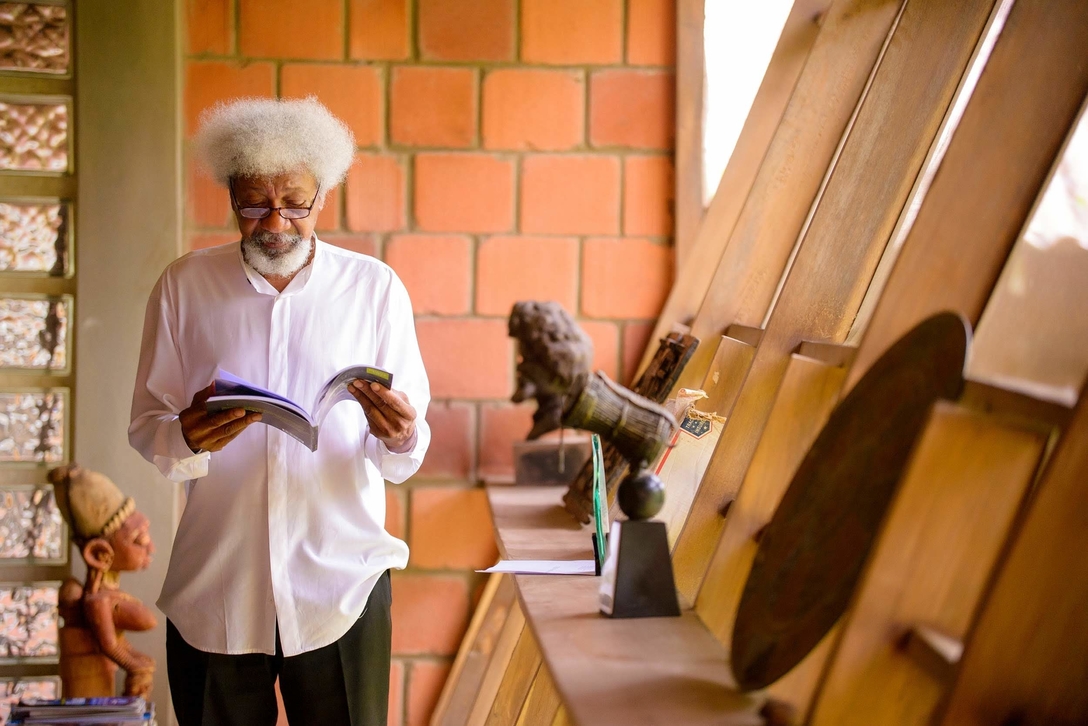
By this time we were back at home, standing in his living room by one of the life-sized bronze leopards by the entrance to the verandah with the big slanted windows, where some magazines — including a recent issue of Transition, a literary magazine he had edited in the ‘60s and ‘70s — were stacked. Ṣóyínká went away to receive a phone call that required his attention, so I started flipping through the magazine. I could tell, from the tenor of the conversation, that I only had a few seconds left. We had spent about two hours together.
“I think I got everything that I need, except for one thing,” I said, when he returned. “VS Naipaul is dead. What do you think about that?”
“Ah, Naipaul is dead” he repeated. I tried to picture him reacting to any of the snide remarks Naipaul had allegedly made about him, or about Africa, over the years. When Ṣóyínká won the Nobel Prize in 1986, Naipaul was reported to have said: “Has he written anything?”
Ṣóyínká’s body language didn’t betray any animosity. “Between you and me, I think he wrote one of the most beautiful novels ever written, A House for Mr Biswas,” he said. “Beautiful novel, and of course some of his other writings. But my immediate instinct the moment I heard the news was ‘Ah! The white race has lost a good writer.’” He said this with his usual mirth, but he had obviously given it some thought.
“Can I quote you on this?” I asked.
“Yes,” he responded, “because he suffered from self-hate. I couldn’t believe that a Jamaican…” (I assumed he meant Caribbean) “that one of us, [that] wrote such a beautiful book—that he could be so filled with self-hate and articulate it.”
When I added that Naipaul’s heritage was Indian too, he nodded his assent. “And the contempt which he had for African culture, and so on…he kept it up too; I thought he would mellow away from it…”
At the 100th anniversary of the Nobel Prize in 2001, Ṣóyínká was invited to participate as a past honoree. He declined to attend; “I told them I’m sorry but I just cannot come and celebrate there. I just couldn’t honestly celebrate with him. But I will always acknowledge that he’s a beautiful prose writer and that book was a classic.”
I told him I hadn’t read it. I had only read Miguel Street and Mystic Masseur. “Believe me,” he said, “there is nothing to beat Mr Biswas.”
Photos by Abiola Balogun and Kọ́lá Túbọ̀sún
nature, African literature, books, Nigeria, reforestation, Wole Soyinka

